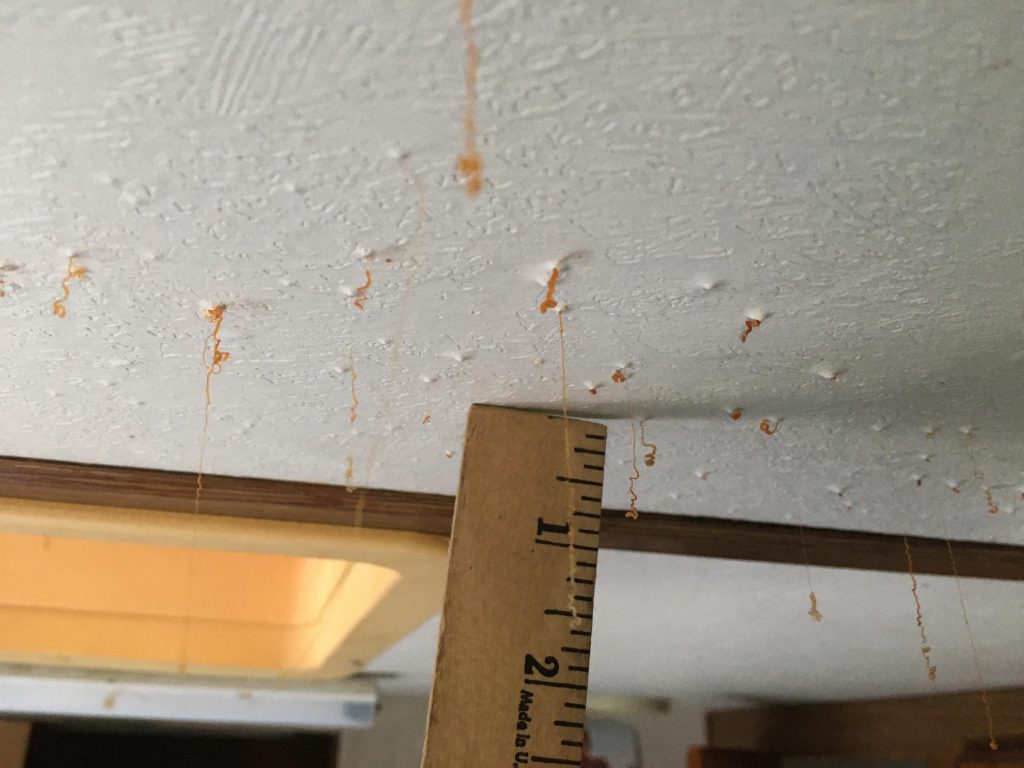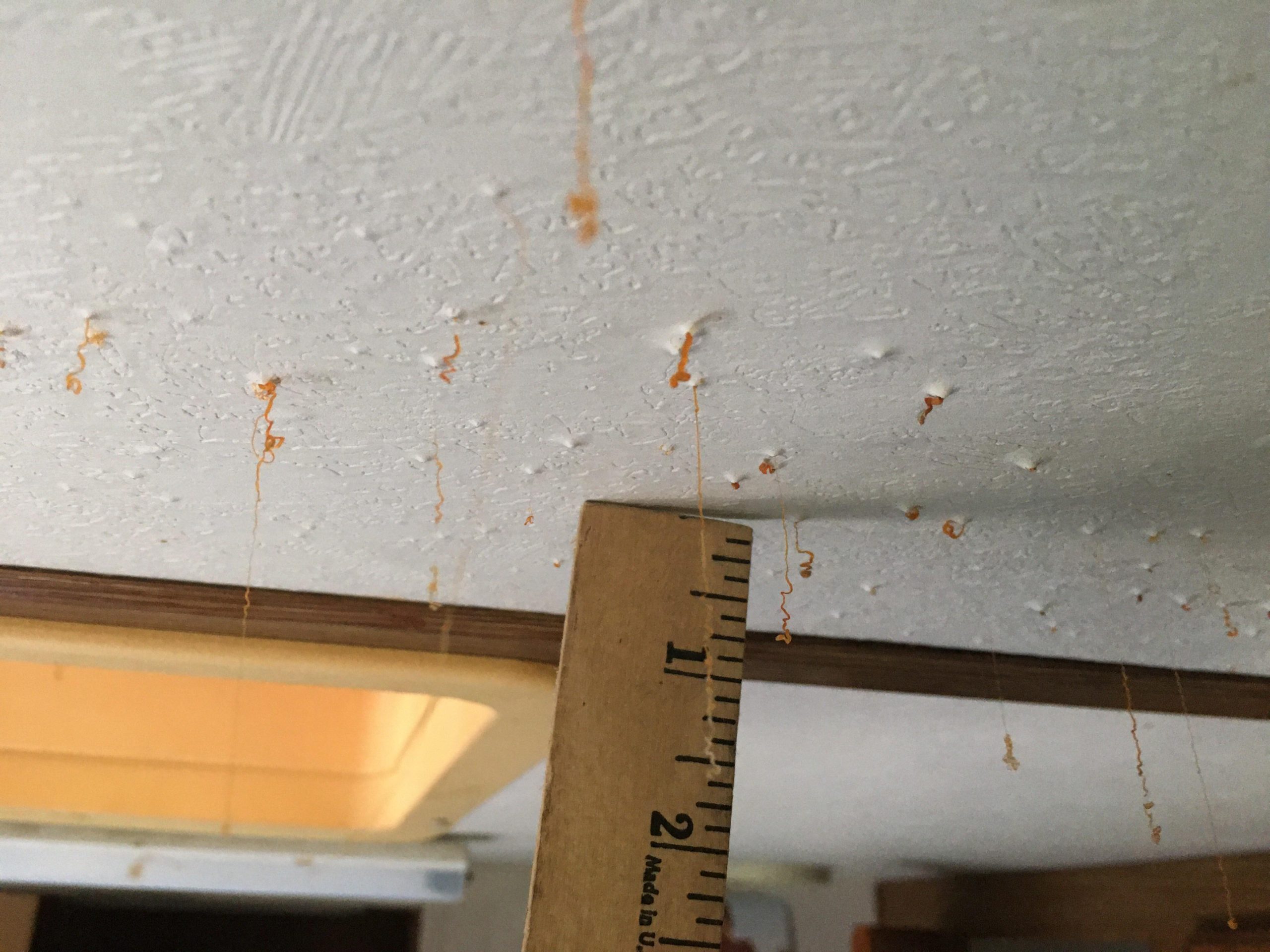Discovering orange mold on the ceiling can be both alarming and puzzling for homeowners. In this comprehensive guide, we will delve into the origins, implications, and effective strategies for addressing the presence of orange mold on your ceiling.

Exploring the Phenomenon: Orange Mold on Ceiling
Orange mold is a distinctive and potentially hazardous type of mold that can thrive in various environments, including ceilings. Let’s unravel the mystery of why and how this unique mold takes root in our living spaces.
Demystifying the Presence
Understanding the factors contributing to the growth of orange mold on the ceiling is essential for developing a targeted approach to remediation.
- Moisture Accumulation: Orange mold thrives in damp environments. Ceiling areas prone to moisture buildup, whether from leaks, condensation, or inadequate ventilation, create ideal conditions for mold growth.
- Warmth and Darkness: Ceilings in poorly lit or rarely visited areas can provide the darkness and warmth mold spores need to multiply. Identifying such spaces is crucial in addressing orange mold growth.
- Inadequate Ventilation: Ceilings with insufficient airflow are more susceptible to mold problems. Proper ventilation is essential to prevent the stagnation of air and subsequent mold colonization.
Consequences of Ignoring Orange Mold on Ceiling: Beyond Aesthetic Concerns
Neglecting the presence of orange mold on the ceiling can lead to a range of consequences, from structural damage to adverse health effects. It’s crucial to address this issue promptly to mitigate potential risks.
Addressing the Issue: Strategies for Dealing with Orange Mold
- Identify and Resolve the Source: Begin by identifying and addressing the source of moisture that promotes mold growth. Fix leaks, improve ventilation, and ensure proper insulation to prevent recurrence.
- Mold Removal and Cleaning: Safely remove the mold from the ceiling using appropriate cleaning agents and protective gear. Ensure thorough cleaning to eliminate spores and prevent regrowth.
- Enhance Ventilation: Improve ventilation in affected areas to discourage mold from returning. Consider installing exhaust fans, opening windows, or using dehumidifiers to maintain optimal humidity levels.
Preventive Measures: Safeguarding Your Ceiling Against Orange Mold
Implementing preventive measures is key to ensuring the long-term health and cleanliness of your ceiling.
- Regular Inspections: Conduct routine inspections of your ceiling, especially in areas prone to moisture. Early detection allows for prompt intervention before mold colonies become established.
- Maintain Optimal Humidity: Keep indoor humidity levels between 30% and 50% to create an environment less conducive to mold growth. Use air conditioners and dehumidifiers as needed.
- Proper Ventilation Practices: Encourage proper air circulation throughout your home. Ensure that vents are unobstructed, and consider using exhaust fans in high-moisture areas like kitchens and bathrooms.
Read too: Understanding and Addressing a Condensation Leak in the Ceiling: Decoding the Drip
Conclusion: Taking Control of Orange Mold on Ceiling
In conclusion, understanding and addressing orange mold on the ceiling is crucial for maintaining a healthy and aesthetically pleasing living space. By identifying the causes, promptly remedying the issue, and implementing preventive measures, homeowners can take control of their indoor environment.
Don’t let orange mold cast a shadow on the beauty and safety of your home. Take proactive steps, stay vigilant, and enjoy a mold-free and comfortable living space for years to come.
